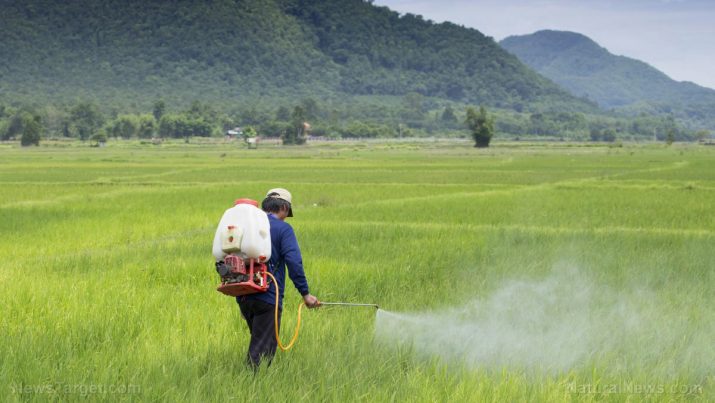
MCPA – toxicity, side effects, diseases and environmental impacts
Thursday, November 30, 2017 by Rhonda Johansson
http://www.naturalpedia.com/mcpa-toxicity-side-effects-diseases-and-environmental-impacts.html

MCPA is a systemic phenoxy herbicide classified by the U.S. Environmental Protection Agency (EPA) as a slightly toxic compound, listing it under its toxicity class III. This means that all products that contain MCPA need to have “Danger” written on them. This is to warn the public of the potential of MCPA to cause severe eye irritation along with skin corrosion.
The herbicide is used to control annual and perennial weeds that may be found along fields of cereals, flax, rice, vines, and peas.
What makes MCPA highly dangerous is the fact that it is compatible with other compounds such as bentazone, bromoxynil, fenoxaprop, mecoprop, tribenuron, and dicamba – the last being a highly controversial herbicide in recent years.
As with other phenoxy herbicides, MCPA is manufactured as an acid but is typically sold as a salt (dimethylamine salt) or as an ester (isoocytl ester).
Brand names which use MCPA include:
- Agritox
- Agroxone
- Agrozone
- Agsco MXL
- Banlene
- Blesal MC
- Bordermaster
- Cambilene
- Cheyenne
- Chimac Oxy
- Chiptox
- Class MCPA
- Cornox Plus
- Dakota
- Ded-Weed
- Empal
- Envoy
- Gordon’s Amine
- Kilsem
- Legumex
- Malerbane
- Mayclene
- MCP
- Mephanac
- Midox
- Phenoxylene
- Rhomene
- Rhonox
- Sanaphen-M
- Shamrox
- Selectyl
- Tiller
- U 46 M-Fluid
- Vacate
- Weed-Rhap
- Zhelan
List of known side effects
The quickest way for MCPA to enter the system is through the nose. The herbicide is readily absorbed in the lungs and skin and can cause chronic damage. MCPA is not known to elicit any acute effects unless consciously ingested. In which case, MCPA can induce slurred speech, twitching, jerking, and spasms.
Chronic effects include retarded growth rate, low blood cell count, and damaged liver and kidneys. In mice models, increased diet levels of MCPA caused the animals to lose weight rapidly and suffer from severe gastrointestinal damage.
Of note is the observation that MCPA exposure has a transgenerational effect. Mothers exposed to the substance have a higher chance of delivering a baby who has already been relatively poisoned by the herbicide. These babies typically have a lower birth weight and are more likely to exhibit developmental abnormalities as they age.
MCPA is toxic to bird and fish. It is not known to be toxic to bees.
Body systems affected by MCPA
Several animal studies on the substance reveal that the herbicide specifically targets the liver, kidneys, spleen, and thymus. Farmers who are regularly exposed to MCPA are noted to have a higher chance of developing anemia, muscular weakness, digestive problems, and liver damage.
Items that can contain MCPA
MCPA and all its formulations are used for weed control. It is not manufactured or produced for any other purpose.
How to avoid MCPA
The herbicide has a field half-life of 14 days to one month depending on the type of crop being treated and the amount of MCPA being used. Farmers are advised to stay away from these fields during that time period, coming in occasionally to attend to their crop. However, proper hygiene guidelines need to be followed. This includes wearing protective gear and washing clothes and skin thoroughly after potential exposure.
Where to learn more
- Pesticides found in majority of drinking water tested; EPA warns consumers need water upgrades
- Hawaii’s Department of Agriculture sued for dumping hazardous pesticides into waterways
- Herbicides and cholesterol drugs interfere with taste, could damage metabolism
- Pesticides.news
- Toxins.news
Summary
MCPA is a herbicide that is classified by the EPA as being a Class III toxin. All products that use the substance need to have a “Danger” sign written on them. MCPA can cause severe eye irritation, reversible anemia, and liver damage.
Sources include:
Tagged Under: Tags: MCPA






